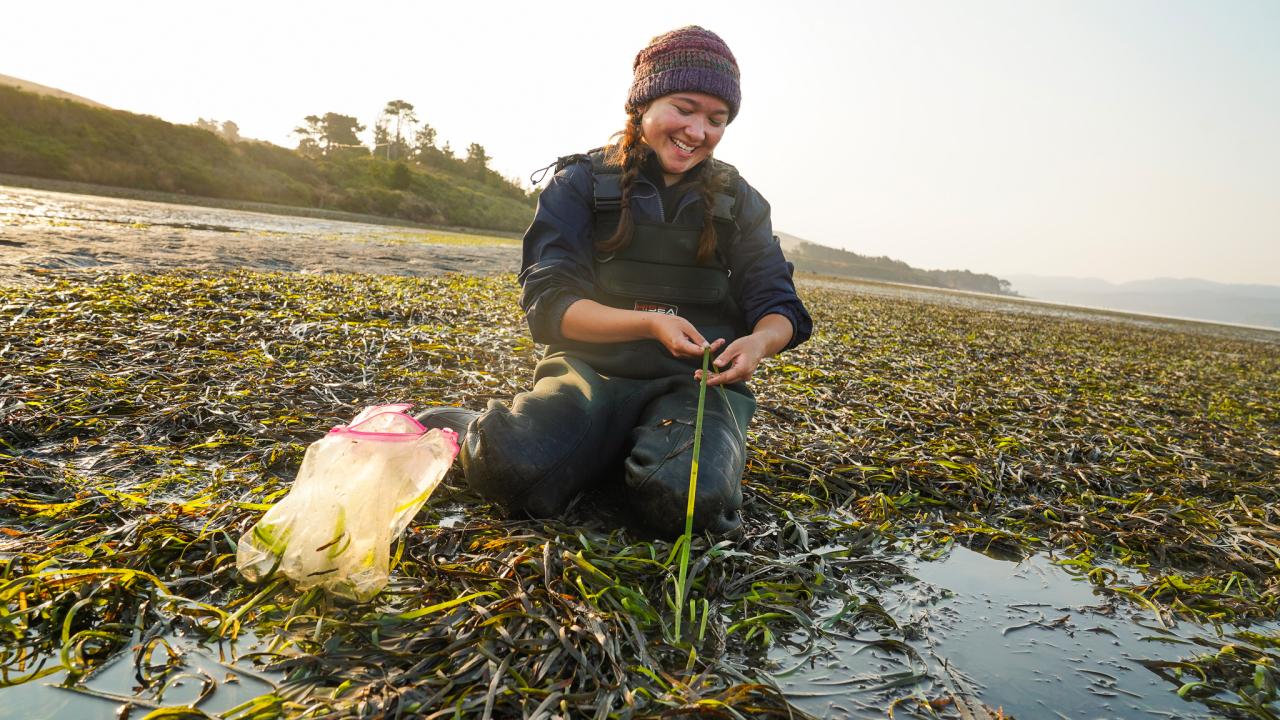
How Students Dive into Marine Science at UC Davis
Undergraduate Research Helps Shape Our Understanding of the Ocean’s Coast and Climate at Bodega Marine Laboratory
UC Davis junior Caroline Donohew watched the everyday power of biology in just five minutes during her summer session class at UC Davis’ Bodega Marine Laboratory, or BML, a coastal research and education facility about 100 miles west of campus.
While observing a mussel’s muscle through a microscope, “I saw it create a byssal thread in real time,” said Donohew, who is from San Anselmo. “And it was just so cool.”
Mussels have an actual muscle called a foot that secretes a “liquid that hardens when it comes into contact with seawater,” Donohew explained. “They stick their little foot down on the rock, pull it back and there’s a thread.”
Experiences like this are available to UC Davis students across all fields. As an R1 university, UC Davis is part of a prestigious group of universities that is conducting research at the highest level. Fewer than 200 institutions in the U.S. have this classification. Over 50% of UC Davis undergraduate students conduct research and creative projects beyond the classroom, and a major new career initiative aims to have 100% participate in experiential learning, including research, before they graduate.
At BML, the “Coastal Marine Research” (BIS 124) class trains undergraduates in all aspects of the research process through seminars before students conduct their own independent research projects in teams of two. For her part, Donohew wanted to know what environmental factors determine the number of threads mussels produce.
